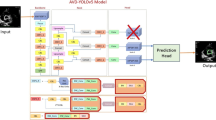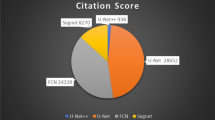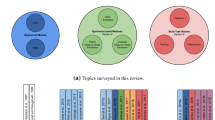Abstract
Dysphagia has become an important issue in many countries, and there is a strong need for elucidating the causes of dysphagia. One of the promising ways is to analyze the static and dynamic mechanisms of cervical structures, such as epiglottises, hyoid bones, and cervical vertebral bodies, based on medical images. In this study, we propose an automated segmentation method of cervical intervertebral disks (IDs) from videofluorography (VF) by use of a convolutional neural network (CNN). First, cervical masks are extracted from the frame images of VF, and then a patch-based CNN is applied to the cervical masks to obtain the probability images of ID regions. The sizes of patches are changed in a certain range, and pixel values in the patches are normalized. Morphological image filters are applied to the probability images to eliminate false-positive pixels. The proposed method is applied to VF of 58 participants, consisting of 39 healthy people and 19 patients. The segmentation results are compared with the ground truth as determined by a medical doctor and are evaluated with the pixel-wise F-measure. The F-measure is highest (0.880) when the patch size is 21 × 21 pixels and the both of the pixel value normalization (PVN) and the false positive elimination (FPE) are applied. On the other hand, the F-measure is lowest (0.443) when the patch size is 15 × 15 pixels and neither PVN nor FPE is applied.






Similar content being viewed by others
References
Marik, P.E., & Kaplan, D. (2003). Aspiration Pneumonia and Dysphagia in the Elderly. Chest, 124(1), 328–336.
Ekberg, O., Hamdy, S., Woisard, V., Wuttge-Hannig, A., Ortega, P. (2002). Social and Psychological Burden of Dysphagia; Its Impact on Diagnosis and Treatment. Dysphagia, 17(2), 139–146.
Shigeta, Y., Ogawa, T., Ando, E., Clark, G.T, Enciso, R. (2011). Influence of tongue/mandible volume ratio on oropharyngeal airway in Japanese male patients with obstructive sleep apnea. Oral Surgery, Oral Medicine, Oral Pathology, Oral Radiology, and Endodontology, 111(2), 239–243.
De Assuncao Sampaio, R., & Jackowski, M.P. (2017). Vocal Tract Morphology Using Real-Time Magnetic Resonance Imaging. 2017 30th SIBGRAPI Conference on Graphics, Patterns and Images.
Silva, S., & Teixeira, A. (2015). Unsupervised segmentation of the vocal tract from real-time MRI sequences. Computer Speech and Language, 33(1), 25–46.
Labrunie, M., Badin, P., Voit, D., Joseph, A.A., Frahm, J., Lamalle, L., Vilain, C., Boë, L.-J. (2018). Automatic segmentation of speech articulators from real-time midsagittal MRI based on supervised learning. Speech Communication, 99, 27–46.
ChanLee, J., Seo, H.G., Lee, W.H., Kim, H.C., Han, T.R., Oh, B.-M. (2016). Computer-assisted detection of swallowing difficulty. Computer Methods and Programs in Biomedicine, 134, 79–88.
Yaita, S., Takizawa, H., Mekata, K., Kudo, H. (2018). Tracking of Bodies of Hyoid Bones in Videofluorography by Use of Support Vector Machine. Medical Imaging Technology, 38(5), 209–216.
Zhang, Z., Coyle, J.L., Sejdic, E. (2018). Automatic hyoid bone detection in fluoroscopic images using deep learning. Scientific Reports, 8.
Reinartz, R., Platel, B., Boselie, T., van Mameren, H., van Santbrink, H., ter Haar Romeny, B. (2009). Cervical vertebrae tracking in Video-Fluoroscopy using the normalized gradient field. International Conference on Medical Image Computing and Computer-Assisted Intervention (MICCAI), 524–531.
Mekata, K., Takizawa, H., Matsubayashi, J., Takigawa, T., Toda, K., Ito, Y., Kudo, H. (2017). A preliminary study on template-matching-based tracking of cervical vertebral bodies in videofluorography during swallowing. International Forum on Medical Imaging in Asia (IFMIA), 190–191.
Mekata, K., Takizawa, H., Takigawa, T., Toda, K., Ito, Y., Kudo, H. (2018). Template-Matching-Based Tracking of cervical spines in videofluorography during swallowing. International Conference on Innovation in Medicine and Healthcare (KES-InMed), 2017, 185–191.
Tan, S., Yao, J., Yao, L., Ward, M.M. (2013). High precision semiautomated computed tomography measurement of lumbar disk and vertebral heights. Medical Physics, 40(1).
Chevrefils, C., Chériet, F., Grimard, G., Aubin, C.-E. (2007). Watershed segmentation of intervertebral disk and spinal canal from MRI images. International Conference Image Analysis and Recognition (ICIAR), 1017–1027.
Tang, Z., & Pauli, J. (2011). Fully automatic extraction of human spine curve from MR images using methods of efficient intervertebral disk extraction and vertebra registration. International Journal of Computer Assisted Radiology and Surgery, 6(1), 21–33.
Ji, X., Zheng, G., Belavy, D., Ni, D. (2016). Automated intervertebral disc segmentation using deep convolutional neural networks. International Workshop on Computational Methods and Clinical Applications for Spine Imaging (CSI), 38–48.
Li, X., Dou, Q., Chen, H., Fu, C.-W., Qi, X., Belavý, D.L., Armbrecht, G., Felsenberg, D., Zheng, G., Heng, P.-A. (2018). 3D multi-scale FCN with random modality voxel dropout learning for Intervertebral Disc Localization and Segmentation from Multi-modality MR Images. Medical Image Analysis, 45, 41–54.
Fischler, MA., & Bolles, R.C. (1981). Random Sample Consensus: A Paradigm for Model Fitting with Applications to Image Analysis and Automated Cartography. Communications of the ACM, 24(6), 381–395.
The Japanese society of dysphagia rehabilitation. (2014). http://www.jsdr.or.jp/wp-content/uploads/file/doc/VF18-2-p166-186.pdf, Accessed 20 June 2019.
Yasuda, T., Takizawa, H., Okumura, T., Kudo, H., Okada, T. (2017). Structure-by-structure Recognition of Spinal Columns, Ribs, Intervertebral Disks and Vertebrae from Abdominal X-ray CT Images. Journal of Japan Society of Computer Aided Surgery, 19(3), 131–138.
Kim, Y., & Kim, D. (2009). A fully automatic vertebra segmentation method using 3D deformable fences. Computerized Medical Imaging and Graphics, 33(5), 343–352.
Korez, R., Likar, B., Pernuš, F., Vrtovec, T. (2014). Parametric modeling of the intervertebral disc space in 3D: Application to CT images of the lumbar spine. Computerized Medical Imaging and Graphics, 38(7), 596–605.
Acknowledgements
We are grateful to Dr. Jun Matsubayashi in Department of Human Health Sciences, Graduate School of Medicine, Kyoto University, Dr. Tomoyuki Takigawa in Department of Orthopaedic Surgery, Okayama University Hospital, Dr. Kazukiyo Toda and Dr. Yasuo Ito in Department of Orthopaedic Surgery, Kobe Red Cross Hospital for helpful discussion.
Author information
Authors and Affiliations
Corresponding author
Additional information
Publisher’s Note
Springer Nature remains neutral with regard to jurisdictional claims in published maps and institutional affiliations.
Rights and permissions
About this article
Cite this article
Fujinaka, A., Mekata, K., Takizawa, H. et al. Automated Segmentation of Cervical Intervertebral Disks from Videofluorography Using a Convolutional Neural Network and its Performance Evaluation. J Sign Process Syst 92, 299–305 (2020). https://doi.org/10.1007/s11265-019-01498-x
Received:
Revised:
Accepted:
Published:
Issue Date:
DOI: https://doi.org/10.1007/s11265-019-01498-x




